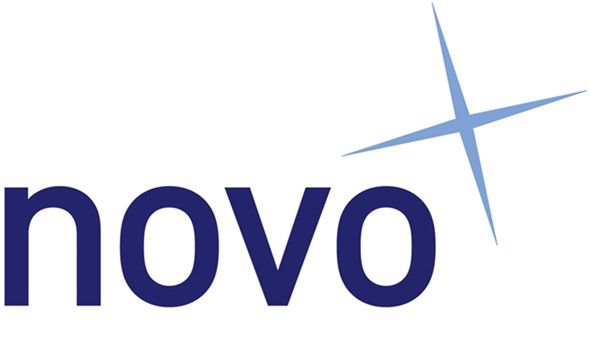How To Build A Skills-first HR Approach

Abstract
The World Economic Forum predicts that by 2025 some 85 million jobs will be displaced, as a result of increasing automation and the development of technologies such as artificial intelligence. Organisations are faced with unique challenges to ensure that they have the skills they need, when and where they need them, to deliver on their strategic intentions. Skills-first HR is an emerging approach to HR that focuses on positioning skills at the centre of HR strategy.
Our research set out to identify what organisations are currently doing in this space, and to create a roadmap for practitioners seeking to adopt a skills-first approach to HR. Today’s organisations are striving to develop the capability to adapt and change at the pace required by volatile and unpredictable external markets.
By offering the potential to facilitate the timely deployment of skills to where they are most needed, skills-first offers a way for HR to be a key enabler of strategic agility.
Building a skills-first organisational approach requires HR leaders to lay firm foundations, as research conducted by John McMackin and David Collings revealed. In this article, the two set out the requirements
The Approach
We gathered data for this study by conducting 38 in-depth interviews with learning and development (L&D) professionals, HR leaders and business leaders in 24 organisations globally. We also initiated a survey that drew 151 responses from L&D and HR professionals. This research, conducted in 2022 and 2023, was supported by Skillnet Ireland in partnership with the Irish Learning and Development Institute.
Key Findings
Our research suggests that HR leaders are increasingly recognising the value of skills-first HR. Early evidence suggests that skills-first HR can enable not only enhanced strategic agility and improved organisational performance but can also positively impact employee perceptions of empowerment and promote diversity, equity, and inclusion in the workplace.
Skills-first HR can be viewed as a counterpoint to traditional approaches to HR, which have tended to be relatively rigid and hierarchal. It focuses on the individual skills required to complete key workplace projects, breaking down traditional boundaries such as overly restrictive job hierarchies.
Matching skills to demand across the organisation is key. Based on our research we define skills-first HR as an approach to enabling an organisation’s strategy that positions skills at the centre of HR strategy. It offers a more agile approach to matching worker skills with available and potential opportunities. Skills-first HR values skills over education and experience, while data and technology enable mapping of current employee skills profiles to emerging skill demands.
While the logic of a move to skills-first HR is compelling, the full-scale adoption of skills-first HR in practice is still in its infancy. For example, a Deloitte study found that 98% of business executives plan to become skills-first organisations.
However, the same study reported that fewer than one in five of those organisations were adopting skills-first approaches in a clear and repeatable way, a finding that is supported by our own research. This reflects the significant challenges involved. Our research spotlights four specific building blocks that are essential foundations for the adoption of skills-first HR.
-
Skills Taxonomy
This describes a classification system for all of the interpersonal and technical skills that employees may need.
A full skills taxonomy typically includes definitions of skills as well as descriptors that can be used to assess the level of skill an employee may have.
Skills taxonomies are an essential building block in realising some of the most important benefits of skills-first HR practices, including enhanced mobility, career opportunities and the capability to redeploy relevant skills to where they are most needed.
-
Skills Audit
With a skills taxonomy in place, the next step for organisations is to develop a baseline understanding of the currently available skills in the organisation, a process commonly referred to as a skills audit or skills inventory. Most organisations in our study began with a reliance on employee self-assessments, in some cases supported by discussions with line managers, to build their initial skills data.
-
Demand Modelling
While skills audits focus on supply of skills internally, a skills-first approach to HR also requires an understanding of demand trends. Demand analysis can inform the identification of skills pinch points over time and provide insights into how to address them through development, redeployment and external hiring. It can also identify geographies where skills are available, or in very tight supply, to inform location decisions.
-
Broad-based Organisational Architecture
Traditional job-based architectures in which careers unfold within geographic and/ or functional divisions, with progression typically vertically through those hierarchies, is at odds with the goal of enhanced mobility and agile redeployment of skills to where they are most needed. To realise the benefits of investing in skills-first HR practices, organisations need to review their structures with a view to reducing barriers to mobility, broadening their organisation’s architecture and reducing structural and cultural barriers to mobility.
Our research identified key enablers of the transition to skills-first HR. To unlock these:
- Get senior leadership buy-in and sponsorship
This is key in positioning skills-first HR as a business tool rather than an HR intervention. Early adopters in our study identified the initial business case as key to gaining the investment and leadership sponsorship required to enable the transition to skills-first HR.
- Pilot in critical areas of the business
Use pilots to refine and develop use cases and business cases for investment in skills-first HR. Organisations in our sample that were further along the skills journey recognised the importance of initially experimenting and piloting skills-first approaches in critical areas of the business. These are often areas with the potential for generating significant additional value, including those facing acute shortages of key skills.
- Master the data
Several of our respondents referenced the fact that their HR teams were ill-prepared for the shift to data-based HR. Growing expectations concerning high-quality people data analytics from HR teams highlight important skills gaps in HR functions. HR teams face interrelated challenges when it comes to data and skills.
First, in having and using the data to understand the skills of employees, and then ensuring that the HR teams have the skills to use that data to inform decision-making.
Originally published on HR Magazine, https://www.hrmagazine.co.uk/content/features/how-to-build-a-skills-first-hr-approach












